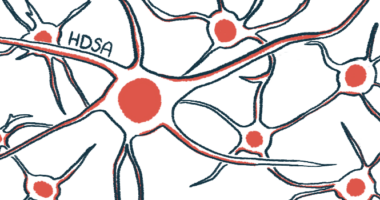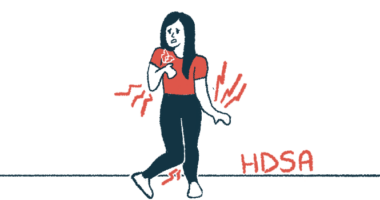
Newly Diagnosed: Taking the First Step on Your Journey
Becoming educated is a good place to start on your journey with Huntington’s disease. Whether you are a patient or a caregiver, knowing as much as possible about the disease will help you be a more active participant in your or your loved one’s healthcare. Learn more below about Huntington’s disease, its causes, its symptoms, and how it’s diagnosed.
Overview
Huntington’s disease is a neurodegenerative disorder characterized by uncontrolled jerking and writhing movements known as chorea, loss of thinking ability, and psychiatric problems. It was first documented in 1872 by George Huntington. There are two types: adult-onset, which is the most common, and juvenile-onset.
Stages
Huntington’s disease can be divided into five stages of disease progression: early stage, early intermediate stage, late intermediate stage, early advanced stage, and advanced stage. It is thought that the variability in disease severity and rate of progression among people with Huntington’s is linked to the genetic mutation in the HTT gene that causes the disease.
Causes
Huntington’s disease is caused by a mutation of the huntingtin (HTT) gene, called a CAG trinucleotide repeat expansion because the segment of the gene containing the CAG portion of DNA repeats is longer than usual. Healthy people normally have the CAG trinucleotide repeated 10-35 times; in people with Huntington’s, it may be repeated from 36 to more than 120 times. The longer this repeat region is, the earlier the symptoms of the disease appear. They also tend to be more severe.
Symptoms
Huntington’s affects two brain areas — the basal ganglia, which are responsible for movement coordination, and the cortex, which controls thought, behavior, and memory. Symptoms of the disease vary and are progressive, meaning they get worse over time. Huntington’s symptoms include movement disorders, psychiatric abnormalities, cognitive and behavioral issues, and problems with feeding and communication.
Diagnosis
A specialist can help identify the characteristic symptoms of Huntington’s disease as part of a diagnosis. This includes exams to measure any changes in motor function, neuropsychological assessments that look for cognitive changes, and psychiatric evaluations to assess any behavioral changes. A brain imaging scan, such as an MRI, may also be carried out to look for brain changes. A genetic test is needed to confirm a Huntington’s diagnosis.
Living With Huntington’s Disease
Huntington’s disease is a progressive condition for which there is not yet a cure. Both the physical and cognitive issues associated with Huntington’s can make it difficult for patients to accomplish everyday tasks, but there are certain therapeutic approaches and strategies that can make the disease more manageable and help patients maintain their quality of life.






